|
[VIEWED 408317
TIMES]
|
SAVE! for ease of future access.
|
|
The postings in this thread span 12 pages, go to PAGE 1.
This page is only showing last 20 replies
|
|
|
JPEG

Please log in to subscribe to JPEG's postings.
Posted on 04-18-09 9:46
AM
Reply
[Subscribe]
|
Login in to Rate this Post:
1  ?
?  Liked by
Liked by
|
| |
Last edited: 11-Jun-09 09:12 AM
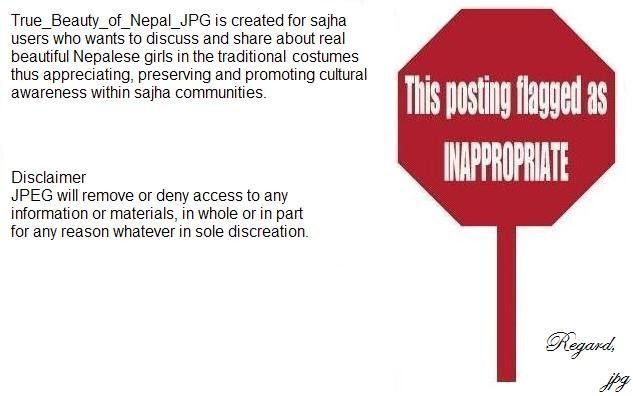
|
| |
|
|
The postings in this thread span 12 pages, go to PAGE 1.
This page is only showing last 20 replies
|
|
|
JPEG

Please log in to subscribe to JPEG's postings.
Posted on 06-20-09 12:23
PM
Reply
[Subscribe]
|
Login in to Rate this Post:
1  ?
?  Liked by
Liked by
|
| |
Joy of celebration by Nepali beauties.

|
| |
|
|
JPEG

Please log in to subscribe to JPEG's postings.
Posted on 06-20-09 2:03
PM
Reply
[Subscribe]
|
Login in to Rate this Post:
1  ?
?  Liked by
Liked by
|
| |
Two beauty of Nepal
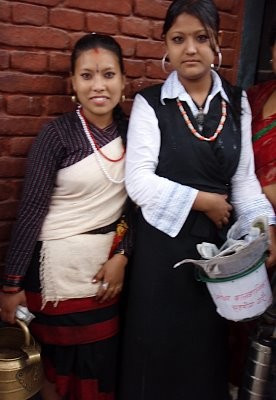
|
| |
|
|
JPEG

Please log in to subscribe to JPEG's postings.
Posted on 06-20-09 3:24
PM
Reply
[Subscribe]
|
Login in to Rate this Post:
1  ?
?  Liked by
Liked by
|
| |
Nature's beauty at its best. Nepali beauty at sunset.

|
| |
|
|
JPEG

Please log in to subscribe to JPEG's postings.
Posted on 06-20-09 3:31
PM
Reply
[Subscribe]
|
Login in to Rate this Post:
1  ?
?  Liked by
Liked by
|
| |
“Everything has its beauty, but not everyone sees itâ€
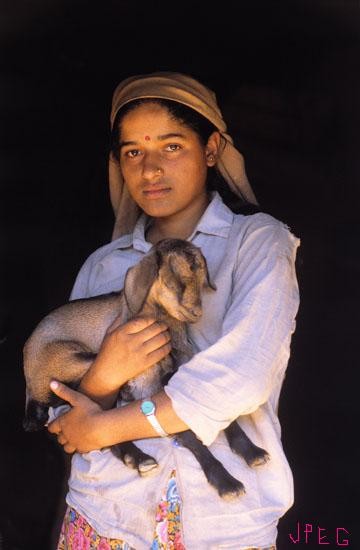
|
| |
|
|
JPEG

Please log in to subscribe to JPEG's postings.
Posted on 06-21-09 8:51
AM
Reply
[Subscribe]
|
Login in to Rate this Post:
1  ?
?  Liked by
Liked by
|
| |
Pair of Magar nis beauty
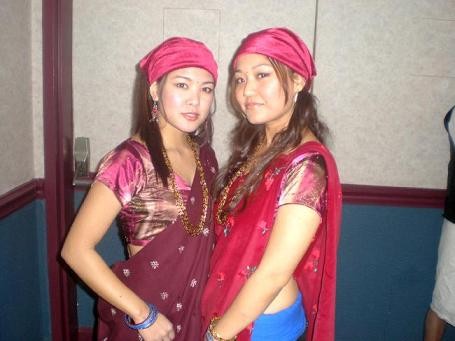
|
| |
|
|
JPEG

Please log in to subscribe to JPEG's postings.
Posted on 06-21-09 9:21
AM
Reply
[Subscribe]
|
Login in to Rate this Post:
1  ?
?  Liked by
Liked by
|
| |
Pair of Sherpa nis beauty
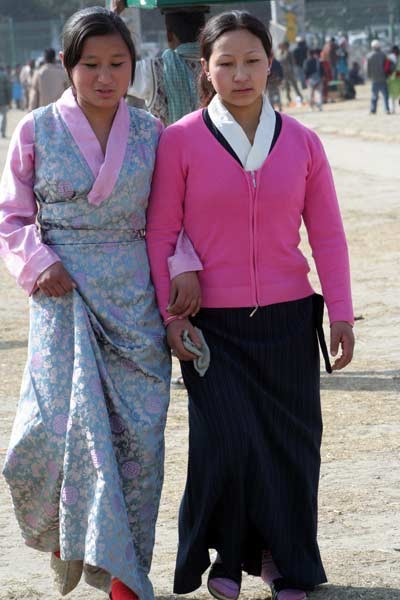
|
| |
|
|
JPEG

Please log in to subscribe to JPEG's postings.
Posted on 06-21-09 11:52
AM
Reply
[Subscribe]
|
Login in to Rate this Post:
0  ?
? 
|
| |
Tamang ni beauties with Damphurays According to one school, Tamang is a corruption of the Tibetan work Ta-mangpo that is many horses. This theory holds that group of horsemen migrated from Tibet and settled down in Eastern Nepal and managed to take wives unto themselves. The off-springs were the Tamangs. According to another school, the word Tamang is corrupt form of Tibetan word ‘Ta-Marpo’ meaning there by a herdsman looking after a herd of horse in the Himalayan pasture. This Ta- Marpo tribe crossed over the Himalayas and began to settle in Nepal. In the process of settlement, they married Nepali women. The children burnout of such marriages began to follow the religious practices of their fathers as well as the social customs of their mother (Hinduism). Points to taken. "The Tamang tribe of Nepal was brought to Kathmandu Valley by King Srong-sen Gampo of Tibet in the 7th century AD as a cavalry division. Their own tradition also says that their original habitat was in Southern Tibet in a place called Uichang. Tamang officers made Central Nepal their permanent settlement and settled around the Kathmandu valley and renamed villages after their names. Their villages were respectively called Moktan kipat, Bal kipat, Bomzan kipat, Ghising kipat, Pakhrin kipat, Yonzon kipat, Syangdan kipat, Thing kipat, Goley kipat, Giaba kipat, Mikchan kipat and Bozu kipat in the Chatara and Dhading districts. They ruled these villages till the Gurkha invasion in the west. Their kipat lands were annexed to the Gorkha Kingdom during the reign of King Prithvi Narayan Shah in 1768 AD". ~ The History of Kirat People, 2003 I also asked some Tamang elders about their ancestor and history. They told Ta - means Horse and Mang means, which looks after the horses. They are from Tibet and their ancestors got married with Hindu women and the new community was formed and that is Tamang. The Tamangs have their Mundum i.e. the song which describes their ancient past. They sing this song on religious and social occasions to the rhythmic beats of their dear musical instrument Damphu (tambourine). Before singing of Tamang Selo (song) the name of Siva the god of all the Mongol Kirati tribes is invoked. "O Siva the Almighty Lord ! We offer this song in your name, This Damphu is not made of gold Nor made of silver, It is made of the woods of Koiralo and Jasing and the skin of the mountain goat, As U start playing a booming sound filled the atmosphere, This is the instrument of goddess Saraswati. We do pray that the sound of the Damphu Will reach your ears" Immediately after the Damphurays (men playing the Damphoo) start singing the Mundum (songs containing the ancient past) of the Tamangs starting from the creation of this universe. "Deep silence and darkness Pervade all around. The earth and the Dubo grass Joined themselves The sky and the mist also mingled into each other A tree then appeared from the water. As it was moving around the grass and the water caught hold of its roots A lotus flower Appeared from the water on which sat the Almight Lord." Work referenced: "The History of the Kirat People", 2003
Last edited: 21-Jun-09 12:04 PM

|
| |
|
|
JPEG

Please log in to subscribe to JPEG's postings.
Posted on 06-21-09 2:22
PM
Reply
[Subscribe]
|
Login in to Rate this Post:
0  ?
? 
|
| |
Gurung ni beauty

|
| |
|
|
JPEG

Please log in to subscribe to JPEG's postings.
Posted on 06-21-09 3:42
PM
Reply
[Subscribe]
|
Login in to Rate this Post:
0  ?
? 
|
| |
Gurung ni beauty Origins of Gurung
The ancient tamu(gurung) tradition known as "Pye-tan-lhu-tan" ...is preserved history of tamu (gurung) the 'Pye-tan-lhu-tan' stated that the Gurung originated from the western Mongolia.Gurung Shamanism tradition is similar to natives in Siberia and Mongolia. Some anthropologists accepted that the Gurungs descended from central Asia (Xiongnu). The History of the Kirat People mentioned that combination of three races known by the names of Khambongbas(Khambos), the Tangsangthas(Mongols) and the Munaphens(Chinese) migrated to the Himalayas regions. The Khambos, were the first immigrants to the Himalayan region followed by the Tangsangthas and the Munaphens. The latter group Tangsangthas and the Munaphens people intermingled with the Khambos to constitute a big human race. Suresh Singh remarked "In about 6th century AD, the Mongols from central Asia, probably from east Mongolia, moved to Nepal, these were pastoralists, Iron using and cavalry men. The Mongols defeated the Kiratas and the Austrics(Dravidians) and assimilated them into their hordes; some Kiratas moved to east Nepal where already other Kiratas were living." Bista wrote that the Kirat descendants include all Indo-Mongolian people speaking various Tibeto-Burmese dialects as their mother tongue, the principal of which are the Rai, Limbu, Yakkha, Sunuwar, Jirel, Hayu, Gurung, Magar, Thakali, Thami and Chepang in the hills, and the Tharu, Danuwar, Bote Majhi, Dhimal, Meche, Koche in the plains. He also cited that the earliest Newar of Kathmandu are also thought to belong to this group. Points to be taken: It is very interesting to find the linkage bond between some tribes of Kirat people in the east and the Gurung people in the west still today as provided by the scholars work. Here's a some excerpts from Gurung Vansawali collected by Hodgson in his Essays on Languages of Northern Tibet. "At present the Lohorong Rai tribes residing in Sovaya Uttar district of Limbuwan or Pallo Kirat in East Nepal claimed that Muh Rong to be their first leader. Interestingly so do the Gurung who claim Muh Rong to be their first leader, which same is supposed to be the corruption of the word Maw Rong or Morong. At present the Gurung tribe pronounces the word Muhrung for Morong which means king. In their culture of Ghato dance the Gurung songsters recite their traditional song and say that from the time of king Morong they have been taught to sing and dance Ghato. They sing such song and dance at least for three days and three nights. The Sasi Mundhum of Khaling Rai tribe agrees with that of Gurung tribe. The children of these nine chiefs or Gurungs, do not follow Buddhism. They have their own tradition and culture which they call kep and he who knows such Kep are called Kepring. It is from this original word kepring, the modern word Giyabring or Ghyabring has been derived. Ghyabrings are priests of the Gurung tribe. When the Lamaism of Tibet spread in the neighbourhood of Gurung districts, they also preferred to address their priest by the name of Ghyabring Lama. In Gurung language the children of these nine chiefs or Gurongs or Gurungs are called Kugyi which means the children of nine families. When the influence of these nine chiefs spread northwards, the old Kirat king of Chan dynasty made friendship with the Gurung chiefs and mixed with them. The Gurung legend describes that in the beginning the Gurung chief Nuchni by name was unknown to the aboriginal Kirat king who was known by the name of Ghaley. Gha or Kha means face and Ley means good; which comes to the meaning of man of good face." Work Referenced: Suresh Singh (Some Notes On Nepali Castes and Sub-Castes-Jat and Thar) The History of the Kirat People, 2003 Fatalism and development By Dor Bahadur Bista, 1991 Himalayan anthropology by James F. Fisher, 1978
Last edited: 22-Jun-09 11:43 AM

|
| |
|
|
JPEG

Please log in to subscribe to JPEG's postings.
Posted on 06-22-09 8:54
AM
Reply
[Subscribe]
|
Login in to Rate this Post:
0  ?
? 
|
| |
Some Nepali beauties click by JPG

|
| |
|
|
Debonair

Please log in to subscribe to Debonair's postings.
Posted on 06-22-09 11:00
AM
Reply
[Subscribe]
|
Login in to Rate this Post:
0  ?
? 
|
| |
Hey JPEG, Thanks for bringing in such a descent/informative thread. Your endeavor to shed light on Nepalese caste and cultures, and its various dynamics is indeed appreciable. I believe lots of Sajha readers have gained/broadened their knowledge on Nepalese social settings and cultural diversity going through this thread (the way I did) and I hope, you'll keep coming up with more postings on yet uncovered ones. Debonair
|
| |
|
|
JPEG

Please log in to subscribe to JPEG's postings.
Posted on 06-22-09 11:53
AM
Reply
[Subscribe]
|
Login in to Rate this Post:
0  ?
? 
|
| |
"A Black Rose among the Red Roses"~ JPEG
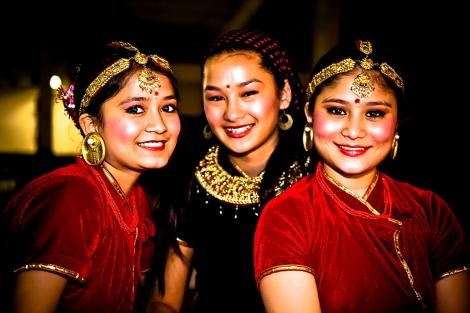
|
| |
|
|
JPEG

Please log in to subscribe to JPEG's postings.
Posted on 06-22-09 12:30
PM
Reply
[Subscribe]
|
Login in to Rate this Post:
0  ?
? 
|
| |
Nature's at its best. Nepali Beauties caught busking in the sun with scenic Himalayas range at the background.

|
| |
|
|
JPEG

Please log in to subscribe to JPEG's postings.
Posted on 06-22-09 5:01
PM
Reply
[Subscribe]
|
Login in to Rate this Post:
0  ?
? 
|
| |
Saree beauties of Nepal_in_Sari. Origins and history:
The word 'sari' evolved from the Prakrit word 'sattika' as mentioned in earliest Jain Buddhist literature. Ancient Tamil poetry, such as the Silappadhikaram and the Kadambari by Banabhatta, describes women in exquisite drapery or saree.In ancient Indian tradition and the Natya Shastra (an ancient Indian treatise describing ancient dance and costumes), the navel of the Supreme Being is considered to be the source of life and creativity, hence the midriff is to be left bare by the saree. Some costume historians believe that the men's dhoti, which is the oldest Indian draped garment, is the forerunner of the sari. They say that until the 14th century, the dhoti was worn by both men and women. Sculptures from the Gandhara, Mathura and Gupta schools (1st-6th century AD) show goddesses and dancers wearing what appears to be a dhoti wrap, in the "fishtail" version which covers the legs loosely and then flows into a long, decorative drape in front of the legs. No bodices are shown. Other sources say that everyday costume consisted of a dhoti or lungi (sarong), combined with a breast band and a veil or wrap that could be used to cover the upper body or head. The two-piece Kerala mundum neryathum (mundu, a dhoti or sarong, neryath, a shawl, in Malayalam) is a survival of ancient Indian clothing styles, the one-piece sari is a modern innovation, created by combining the two pieces of the mundum neryathum. It is generally accepted that wrapped sari-like garments, shawls, and veils have been worn by Indian women for a long time, and that they have been worn in their current form for hundreds of years. One point of particular controversy is the history of the choli, or sari blouse, and the petticoat. Some researchers state that these were unknown before the British arrived in India, and that they were introduced to satisfy Victorian ideas of modesty. Previously, women only wore one draped cloth and casually exposed the upper body and breasts. Other historians point to much textual and artistic evidence for various forms of breastband and upper-body shawl. In South India, it is indeed documented that women from many communities wore only the sari and exposed the upper part of the body till the 20th century.Poetic references from works like Shilappadikaram indicate that during the sangam period in ancient South India, a single piece of clothing served as both lower garment and head covering, leaving the bosom and midriff completely uncovered. In Kerala there are many references to women being bare-breasted,including many pictures by Raja Ravi Varma. Even today, women in some rural areas do not wear cholis.

|
| |
|
|
JPEG

Please log in to subscribe to JPEG's postings.
Posted on 06-22-09 8:43
PM
Reply
[Subscribe]
|
Login in to Rate this Post:
0  ?
? 
|
| |
Not forgetting the Night-Time Sajhaites. More Nepali Sari beauties.
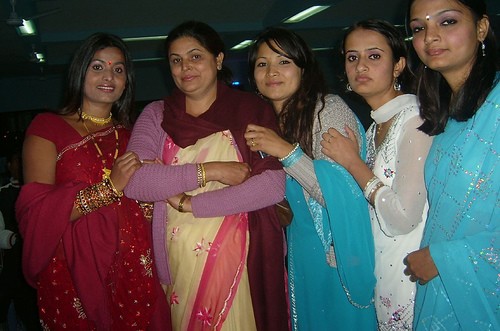
|
| |
|
|
JPEG

Please log in to subscribe to JPEG's postings.
Posted on 06-23-09 2:21
PM
Reply
[Subscribe]
|
Login in to Rate this Post:
0  ?
? 
|
| |
Another sari beauty.

|
| |
|
|
JPEG

Please log in to subscribe to JPEG's postings.
Posted on 06-23-09 3:04
PM
Reply
[Subscribe]
|
Login in to Rate this Post:
0  ?
? 
|
| |
One more.
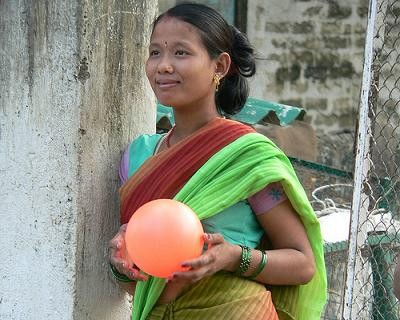
|
| |
|
|
JPEG

Please log in to subscribe to JPEG's postings.
Posted on 06-23-09 6:29
PM
Reply
[Subscribe]
|
Login in to Rate this Post:
0  ?
? 
|
| |
Traditional beauty brewing traditional Raksi(rice-wine) Home distillation is an ancient practice in Nepal, still managing to hold its own against modern distilleries. The finest alcohol is homemade stuff commonly known as Raksi. Raksi is potent, exhilarating and smooth as velvet. To test for good raksi, toss a small amount on a fire and see if it burns. Women of a household pride themselves on their liquor, and will put the most effort and time into making raksi for a big celebration like a wedding. Different grains produce different flavors: rice raksi is rich and smooth, kodo (millet) is stronger and more fiery. Less potent is home-brewed beer, jaar (Nepali) or chang (Tibetan), a whitish, thin drink made from rice or millet with a refreshing sweet-sour taste. A variation served in mountain regions is tongba, fermented mash which is placed in a wooden container and mixed with hot water. You drink from a bamboo straw, sipping the liquid and avoiding the bits of millet; the hot water is refilled several times, and nursing a flask of tongba is a nice sport for a cold evening. There has been no historical reference of any kind whether the traditional art of brewing Rakshi came down from other Asian countries or did the same art of brewing was influenced by the Kirantis for such drink is similar to Korean Cheongju, Sake, a traditional Japanese rice wine, Lao-Lao from Laos, Sato of Thailand, and Choujiu an ancient variety of Chinese wine. But in the epic of the Mahabharata, the Cinas(Chinese) appear together with the Kiratas among the armies of king Bhagadatta of Pragjyotisa (Assam) taking side of Kauravas. In the Sabhaparvan, the same king is said to be surrounded the Kiratas, and the Cinas. Also in the Bhismaparvan, the army of Bhagadatta is said to consist of the Kiratas and the"yellow-colored" Cinas. Points to be taken: According to Bista, Distilled spirits (alcohol) called aaraakha, ngashi, or waasim are central to Kirat culture while consumption of alcohol is strictly fordidden in tajadhari group. This is one true beauty of Nepal that needs to be preserved cause this is an old traditional heritage that has been past down from generations. It would be even more beautiful when Raksi finds the selves among Sake and Cheongju for international market. Work reference: People of Nepal 2004, by Dor Bahadur Bista.

|
| |
|
|
JPEG

Please log in to subscribe to JPEG's postings.
Posted on 06-23-09 9:28
PM
Reply
[Subscribe]
|
Login in to Rate this Post:
0  ?
? 
|
| |
Limbu ni beauties at Chyabrung dhol naach The word Limbu means an archer, or bearer of bow and arrows. Their ancestral and original stronghold known as Pallo Kirat or Limbuwan spans from Arun River in Nepal to the Kingdom of Sikkim in the east. In Nepal, Limbus live and work in the districts of Sankhuwasabha, Tehrathum, Dhankuta, Taplejung, Panchthar and Ilam. Their scripture is called Mundhum. Fedangba, Shamba and Yeba-Yema are their sacred specialists. Limbus have their own script called Sirijunga. There are many books written in the Limbu language. Their faith is enshrined in the evergreen Cynodondactylon (dubo) grass and rocks. They cremate their dead. They celebrate the dance festivals of Kelangma popularly known as Chyabrung dhol naach (two-sided drum) and Yalakma (rice harvest dance) as major events. Chyabrung or Ke, a long cylindrical hollow, two-sided drum, is the most popular musical instrument of the Limbu Community. Hence the folks from Limbu community also called this dance "chyabrung naach". The dancers hang the Chyabrungs around their neck and beat the drum with palm on one side and with a stick on the other side. In this manner, the Limbu dancers execute delicate and complicated foot works to the beats of the Chyabrung. It is a song less dance and is based on rhythmic music. In this age-old folk dance, the Limbu dancers depict graceful movements of wild animals and birds. Limbus, in general, marry within their own community and also with Rais. Boys are at liberty to choose a girl and girls are equally free to decide whether to spend life with the boy in question or not (Jones and Jones, 1976). Cross-cousin marriage is not allowed in Limbu culture. Marriage between a man and the widow of his elder brother can take place if they mutually agree. Marriage between a man and a woman outside family relations and having different thars (clans) is also possible either by arrangement or by mutual consent of the boy and the girl in question. In Limbu's wedding, asking for a girl's hand is the most important ceremony. In this system, the girl can ask for anything and an unlimited amount of gold, silver, etc. This confirms to the girl's family that the boy is financially secure enough to keep their daughter happy. Few days after the wedding, the boy's family members have to visit the girl's house with a piglet and some alcoholic and non-alcoholic drinks depending upon the financial standard of his house. The key ceremonies of a Limbu wedding take place in the groom's house rather than that of the bride's because girl has to stay with her husband. There are two special dances in this ceremony, one is called "yalakma" or dhan nach in Nepali(rice harvest dance) and "Kelangma" or Chyabrung in Nepali. Yalakma is characterized by men and women dancing in a slow circle, whereas Kelangam consist of complex footwork that goes with the beat of the drums. Anyone can join the dance and they can go for long hours. Yalakma also celebrates the harvest season in addition to being a feature of social occasions including weddings. Points to be taken: Though Limbus aren't Hindu, they are recognized in Hindu Society. Nepal's pre-eminent sociologist, Professor Dor Bahadur Bista, asserted that, of all the proverbial thirty-six caste and ethnic groups of Nepal, the Hindu caste system made the least impact on the Limbu. In part, this reflected not only their geographical distance from the seat of power in the capital city of Kathmandu but also their cultural independence.

|
| |
|
|
BannedUser

Please log in to subscribe to BannedUser's postings.
Posted on 10-31-11 1:24
PM [Snapshot: 50902]
Reply
[Subscribe]
|
Login in to Rate this Post:
0  ?
? 
|
| |
Why were people flagging the posts by JPEG? (stumbled upon this myself as it showed up under recommended links in the sajha sidebar)
|
| |
